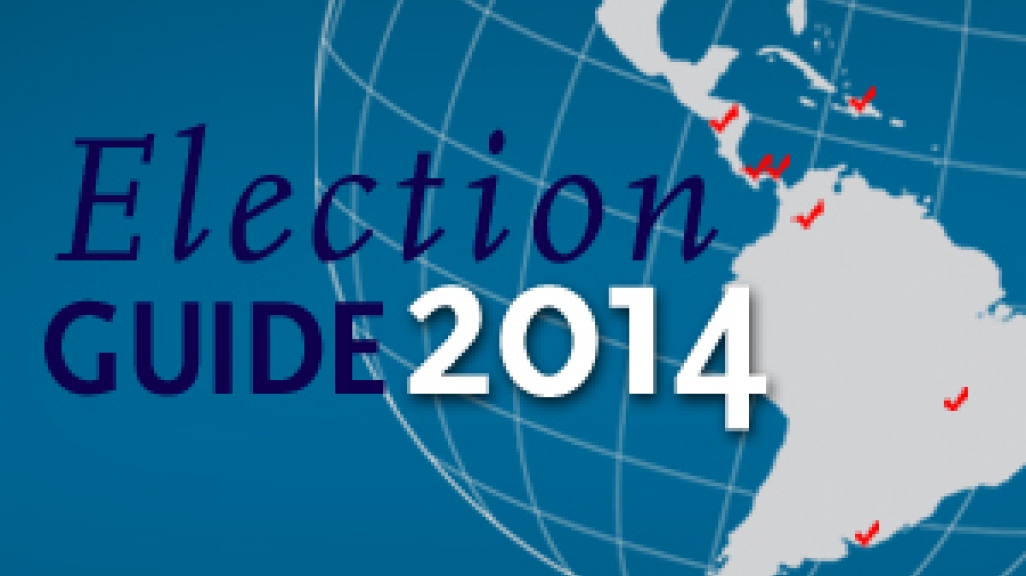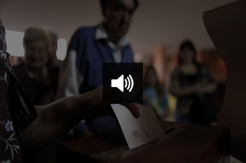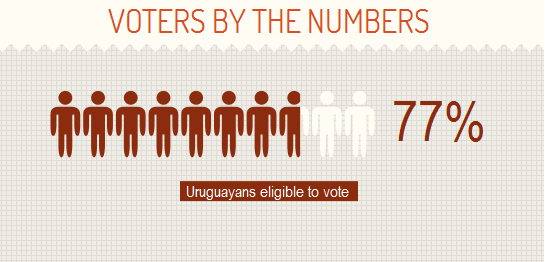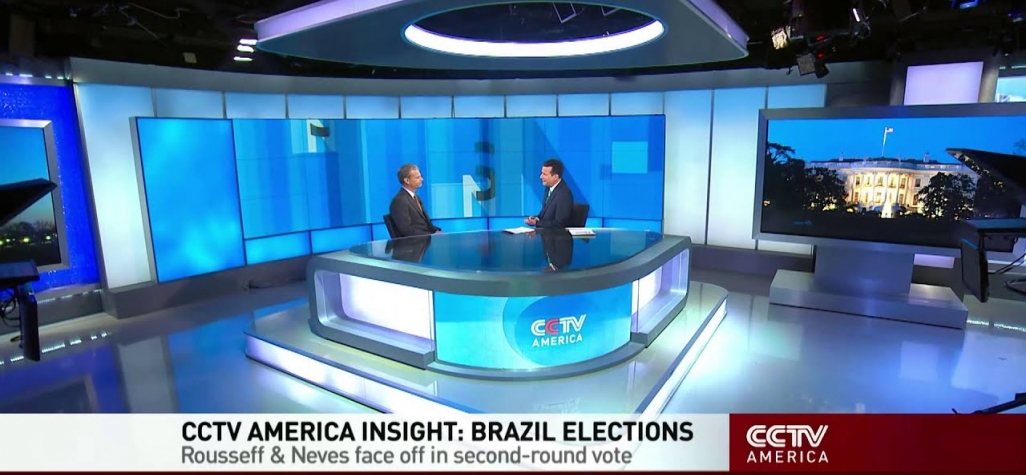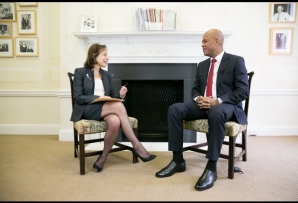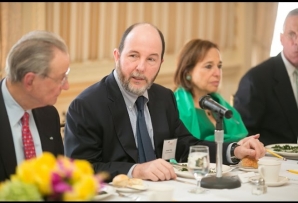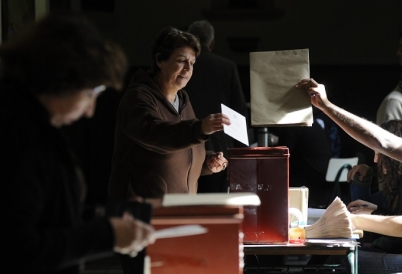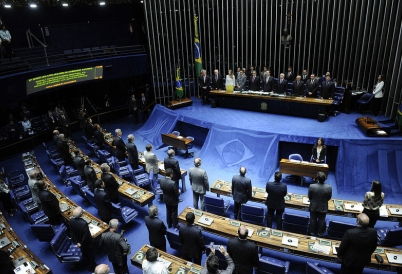Guide: 2014 Elections in the Americas
Guide: 2014 Elections in the Americas
Eight countries in the Western Hemisphere will hold national-level elections in 2014:
|
Collectively, these countries represent around 60 percent of the population of the Western Hemisphere. Voters will elect seven presidents and 1,699 legislators in total. AS/COA Online presents an overview of the region’s federal elections in 2014, along with the latest analysis, results, multimedia, and expert perspectives.

Costa Rica
Type: Presidential and Legislative
First Round: February 2, 2014
Runoff: April 6, 2014. A second round is held if a candidate fails to win more than 40 percent of votes during the first round. During the second round, the victor wins by a majority.
Inauguration: May 8, 2014
Number of Seats: In addition to the president, 57 members of Costa Rica’s unicameral Legislative Assembly will be elected for four-year terms. Reelection is allowed, but consecutive terms are not.
Terms: Presidents serve four-year terms and can be reelected, but cannot serve consecutive terms.
El Salvador
Type: Presidential
First Round: February 2, 2014
Runoff: March 9, 2014. If none of the candidates achieve an absolute majority (50 percent of the vote plus one), a second election is conducted no later than 30 days later. The candidate who garners the most votes wins the second round.
Inauguration: June 1, 2014
Terms: Presidents are elected for five-year terms without the possibility of consecutive re-election.
Colombia
Type: Legislative
Election Day: March 9, 2014
Number of Seats: The Senate holds 102 seats while the Chamber of Deputies houses 166. All seats are up for grabs each election cycle.
Start of Legislative Session: Elected officials will take office on July 20.
Terms: Colombia’s senators and representatives can serve an unlimited number of four-year terms.
Panama
Type: Presidential and Legislative
Election: May 4, 2014
Presidential Election: There is only one round of voting in the presidential election. The candidate who receives a plurality of votes takes office. Presidents are elected for five-year terms and must wait two terms to be eligible for reelection.
Inauguration: July 1, 2014
Number of Seats: 71 representatives in Panama’s unicameral Legislative Assembly will be elected for five-year terms, along with the president.
Terms: Presidents are elected for five-year terms and must wait two terms to be eligible for reelection. There are no term limits for National Assembly members.
Colombia
Type: Presidential
First Round: May 25, 2014
Runoff: June 15, 2014. A second round is held if a candidate fails to win more than 50 percent of votes during the first round. During the second round, the victor wins by majority.
Inauguration: August 7, 2014.
Terms: Presidents serve four-year terms, with the possibility of consecutive reelection.
Brazil
Type: Presidential and Legislative
First Round: October 5, 2014
Runoff: October 26, 2014. A runoff takes place if a candidate fails to receive more than 50 percent of the vote. The winning candidate in the second round must win an absolute majority.
Inauguration: The president takes office on January 1, 2015. The new legislative session starts on February 1, 2015.
Number of Seats: There are 513 seats in the Chamber of Deputies and 81 spots in the Senate. Deputies serve four-year terms, and all seats are up for a vote in 2014. Senators serve eight-year terms; a third of seats are up for a vote in 2014.
Terms: Presidents serve four-year terms with the possibility of consecutive reelection.
Bolivia
Type: Presidential and Legislative
First Round: October 12, 2014
Runoff: December 7, 2014. A runoff takes place if a candidate fails to win more than 50 percent of the vote, or 40 percent of the vote with a 10 percent lead over the second-place candidate. In a runoff, the candidate who gains the majority of the vote wins.
Inauguration: The president and legislators take office on January 22, 2015.
Number of Seats: The Chamber of Deputies will fill all 130 seats for five-year terms, and the Senate will elect all 36 members for five-year terms. Members of Congress are eligible for one consecutive reelection.
Terms: Presidents are permitted one consecutive reelection. However, in May 2013 a law was passed allowing President Evo Morales to run for reelection a second time.
Uruguay
Type: Presidential and Legislative
First Round: October 26, 2014
Runoff: November 30, 2014. A runoff is held on the last Sunday of November of the same year if no candidate garners an absolute majority in the first round.
Inauguration: March 1, 2015
Number of Seats: In Uruguay’s bicameral National Legislature, 30 senators and 99 representatives will be elected for five-year terms. There are no term limits for either the upper or lower houses. Also, the vice president serves as an ex officio member of the Senate, bringing to total number of senators to 31.
Terms: Presidents are elected for five-year terms, and may be re-elected but not for consecutive terms.
United States
Type: Legislative
Election Day: November 4, 2014
Number of Seats: All 435 seats are up for election in the House of Representatives, as well as 33 of the 100 Senate seats.
Start of Legislative Session: Newly elected legislators will take office on January 3, 2015.
Terms: Representatives are elected to two-year terms, with all seats up for grabs each election cycle. Senators, on the other hand, serve six-year terms with one-third of Senate seats up for renewal every two years. There are no congressional term limits in the U.S. Congress.
Editor's note: This guide originally incorrectly stated that seven countries in the Americas will hold elections in the 2014. As of the start of 2014, the number of countries with national elections planned is eight, with seven presidents and 1,699 legislators to be elected across these countries. This guide also incorrectly stated that Panama's presidential inauguration is September 1; the correct date is July 1. This guide was updated on May 2 to reflect Bolivia's exact election dates, announced on April 30.
2014 Election Guide Blog
AS/COA Online looks at the latest poll numbers, the leading presidential candidates, and election issues in the countries in the Americas holding federal-level elections in 2014.
2014 Election Blog: Voter Turnout in Latin America's Presidential Votes
Among seven countries with presidential elections this year, Bolivia had the highest turnout and Colombia had the lowest.
This year, seven Latin American countries held presidential elections and, in all but two cases, turnout exceeded that of the 2012 U.S. presidential elections. In every country except Colombia, over half of eligible voters cast their ballots, and in three countries, turnout exceeded 80 percent. For first-round votes, Bolivia’s turnout came in highest. During both first rounds and runoffs, Colombia had the lowest turnout. And among the five countries that held second rounds, Uruguay topped the list.
All of these countries have some form of mandatory voting, with the exception of Colombia. In Costa Rica, El Salvador, and Panama, voting is compulsory but there are no sanctions for those who abstain. Bolivia, Brazil, and Uruguay impose sanctions on those who fail to show up at the polls. (These countries have low numbers of blank votes—less than 4 percent). In Brazil, voters must pay a small fine, but if they fail to pay it, they can be barred from certain government services, like getting a passport or taking a civil service exam. In Bolivia, the fine is more substantial, and those who fail to pay can even get banned from making bank transactions as well as government services. In Uruguay, non-voters must pay a fine and if they don’t, they risk getting shut out of services like taking public university entrance exams.
Out of the seven countries, Bolivia had the highest turnout: over 90 percent. Former Guatemalan President Álvaro Colom, who served as head of the Organization of American States’ electoral observer mission in Bolivia, lauded the Andean country’s voter turnout as “an example for Latin America.”
Meanwhile, Colombia—where voting is optional—saw the lowest turnout among all seven countries. In fact, it experienced the lowest turnout rate in two decades during the first round of voting in May. Some analysts say voters grew weary of mudslinging on the campaign trail. Political scientist Marcela Prieto told El Tiempo that “people are tired of the bickering and it’s evident that a connection was lacking between the candidates and the topics Colombians want to hear about: education, jobs, health.”
During Brazil’s first-round vote in October, the combined number of abstentions, blank, and null votes amounted to the highest level since 1998. However, abstention overall remained stable at around 19 percent; it tends to fluctuate at around 20 percent for presidential elections. Plus, Estado de São Paulo pointed out that abstention partially stems from a lack of updates to voter lists, which sometimes include people who have passed away.
The elections ended in some form of continuity in most countries. Voters in Bolivia, Brazil, and Colombia reelected their presidents; in El Salvador and Panama, the sitting vice president won the vote for the country’s highest office. In Uruguay, meanwhile, voters chose a former president. Costa Rica was the outlier, given that an opposition candidate who polled fourth came out the victor.
8 Fast Facts on Uruguay's 2014 Presidential Runoff
Find out about the November 30 election, including where the two candidates stand on issues ranging from marijuana policy to accepting Guantanamo detainees.
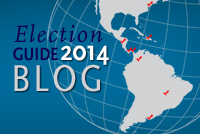 The second round of Uruguay’s presidential vote takes place November 30, given that the general election saw no candidate able to garner more than 50 percent of the vote. During the first round, ex-President Tabaré Vázquez earned 47.8 percent, and Congressman Luis Lacalle Pou came in second with 30.9 percent. Now, Vázquez maintains an ample lead in the polls and stands poised to enter his country’s highest office once again. Get the facts about the election and candidates.
The second round of Uruguay’s presidential vote takes place November 30, given that the general election saw no candidate able to garner more than 50 percent of the vote. During the first round, ex-President Tabaré Vázquez earned 47.8 percent, and Congressman Luis Lacalle Pou came in second with 30.9 percent. Now, Vázquez maintains an ample lead in the polls and stands poised to enter his country’s highest office once again. Get the facts about the election and candidates.
1. If the polls are correct, a former president will win the vote.
Ex-President Tabaré Vázquez, running on the ruling Broad Party ticket, leads the polls. A November 18 Equipos Mori survey gave him 51 percent, with the National Party's Luis Lacalle Pou at 38 percent. The same day, a Factum poll showed the former president with a 15-point lead, and a November 21 Grupo Radar poll showed a closer margin of 10 points. If he wins, Vázquez will serve his second non-consecutive five-year term.
2. Vázquez left office with high approval ratings.
In office from 2005 to 2010, Vázquez finished his term with a 60 percent approval rating. During his presidency, poverty fell by around 46 percent, and tax reforms helped benefit the working and middle classes. Vázquez also focused on education, tripling public school funding and launching a computer initiative that gave 380,000 free laptops to students and teachers.
3. The opposition candidate is the son of a former president.
Lacalle Pou is only 40 years old and is the son of former President Luis Alberto Lacalle, who served from 1990 to 1995. The candidate is a three-term federal congressman and eked out a surprise primary win to run on the National Party ticket.
4. The historically powerful Colorado Party threw its support behind the National Party after the first round.
The Colorado Party—the most elected party to the country’s presidency—decided to endorse Lacalle Pou for the runoff vote. The party had one of its worst-ever showings in October, winning less than 13 percent of the vote.
5. The two candidates differ on the country’s marijuana policy.
Last year, Uruguay became the first country to legalize the growth, sale, and use of marijuana. Lacalle Pou said he would send a bill to Congress to modify the law, repealing most of the legislation except for the parts allowing personal cultivation and cannabis clubs. Vázquez supports the law, but said that if selling the drug in pharmacies doesn’t work well, he will change that part of the legislation. He also said he’d use the marijuana buyer registry the law created in order to encourage treatment for drug use.
6. Vázquez and Lacalle Pou diverge on whether to accept detainees from Guantanamo Bay.
In May, President José Mujica said his country would accept U.S. detainees from Guantanamo Bay. But the prison transfer hasn’t happened yet, and both candidates disagree on whether the move should happen. Lacalle Pou opposes accepting the detainees; Vázquez supports it.
7. The ruling party’s Senate majority depends on the vote.
While the Broad Front won a majority in the lower house on October 26, its majority in the Senate rests on the November 30 runoff. If Vázquez wins, his vice president will become the deciding vote in the upper house. During the first round, the Broad Front won 15 out of 31 seats in the Senate.
8. Around 250,000 new young voters are eligible to vote in this election.
A quarter million voters aged 22 and younger are able to vote for president for the first time this year. In Uruguay, voting is mandatory starting at age 18. Overall, over 2.6 million Uruguayans—or 77 percent of the population—are eligible to vote this year.
Poll Update: Former Uruguayan President Leads ahead of Runoff
Surveys show the Broad Front's Tabaré Vázquez with an ample advantage over the National Party's Luis Lacalle Pou before the November 30 vote.
Ahead of Uruguay’s November 30 presidential runoff, the country's ruling Broad Front maintains its advantage in the polls. During the first round on October 26, this party won around 48 percent of the vote, compared to about 31 percent for the second-place National Party. Now, Vázquez stands poised to take the country's highest office once again.
A November 12 Cifra poll gave the Broad Party's ex-President Tabaré Vázquez 52 percent and the National Party's Luis Lacalle Pou 35 percent. The survey found that 6 percent say they will cast a null or blank vote, while 7 percent are undecided.
Similarly, an Equipos Mori poll released the same day showed Vázquez with 52 percent and Lacalle Pou at 39 percent. Since the November 6 survey by the same pollster, Vázquez lost one point, while Lacalle Pou gained one point. Around 4 percent are undecided, and 5 percent plan to vote null or blank.
Finally, a Factum poll released November 11 shows that Vázquez leads with 52 percent, with Lacalle Pou at 37 percent. Around 5 percent are undecided, and 6 percent plan to vote null or blank. This represents a one-point increase for Lacalle Pou since Factum's November 4 survey, and no change for Vázquez.
Factum found that Vázquez has an advantage among young voters and those with elementary and high-school education. Lacalle Pou leads among older voters and those with college degrees.
2014 Election Blog: Immigration Policy in the U.S. Gubernatorial Races
Find out how 10 newly elected state leaders approach immigration reform and border policies.
After Republicans won the majority of the U.S. House of Representatives and the Senate on November 4, the future of federal immigration reform remains unclear. But state governments across the country have been taking action on immigration, including a number of governors who won reelection. Some of these leaders have restricted Secure Communities, a federal deportation program that works with state and local jurisdictions to check the immigration status of those who have been arrested. Others have offered relief to undocumented youth, known as Dreamers. Find out how governors stand on the issue in a number of states where immigration is a key point of debate.
Arizona: New GOP Governor-elect Doug Ducey pledged to increase resources to prevent undocumented immigration and crime along the Arizona-Mexico border. He wants to put more fencing and satellites on the border, as well as more troops. Ducey also aims to boost funds for prosecution of undocumented violent criminals, looking to focus the Department of Public Safety’s budget to focus on violent criminals, drug cartels, and human traffickers. He plans to maintain Governor Jan Brewer’s policy of denying driver’s licenses to undocumented youth. Finally, he wants to seek reimbursement of border security costs from the federal government.
California: Reelected Democrat Governor Jerry Brown made numerous moves on immigration reform during his last term. He signed the state’s DREAM Act in 2011 to provide financial aid at public colleges for undocumented immigrants. On September 30 this year, Brown signed three pieces of immigration legislation. One law created a loan program to provide over $9 million to public California universities to give loans to undocumented students. Another will permit undocumented immigrants to apply for state professional licenses to work in a variety of fields, from medical to accounting. The final bill earmarks $3 million to non-profits to provide legal representation for minors in deportation cases following the child migrant crisis. Last year, Brown signed a bill to allow undocumented immigrants to get driver’s licenses.
Florida: In June, now-reelected GOP Governor Rick Scott signed a bill that gives in-state tuition to undocumented immigrants. The move was a shift from his previous stance on immigration; four years ago, he said he would support an Arizona-style immigration law in Florida and legislation requiring employers to use e-Verify, though neither came to pass. In June, he vetoed a bill that would have given some undocumented youth temporary driver’s licenses—even after the measure was approved near-unanimously in the Republican-controlled legislature. But during the gubernatorial debate in October, Scott said he supported Senator Marco Rubio’s efforts to push for comprehensive immigration reform at a national level. Also this year, Scott tapped Carlos Lopez-Cantera as the first Latino lieutenant governor in Florida history.
Georgia: Reelected Republican Governor Nathan Deal signed the state’s controversial 2011 immigration law, which criminalizes knowingly transporting and harboring undocumented immigrants, as well as using fake ID to get a job. It also permitted police officers to ask about immigration status during certain investigations. (Federal courts later struck down key parts of the law.) Previously, during his tenure as a federal congressman, Deal supported a host of bills aimed at limiting immigration, including building the border wall, limiting visas for skilled workers, and ending birthright citizenship. During the child migrant crisis this summer, Deal initially opposed over 1,000 children being sent to his state, but later agreed to uniting children with their families.
Illinois: GOP Governor-elect Bruce Rauner unseated Governor Pat Quinn on November 4. Rauner supports immigration reform and a path to citizenship for the undocumented. He also said he supports the DREAM Act and wants to make Illinois a “welcoming state” for immigrants. He backs securing the country’s borders and preventing undocumented immigration, and wants to increase legal immigration. Meanwhile, Quinn launched an Office for New Americans early in his term to provide services to immigrants.
Maryland: Republican Governor-elect Larry Hogan said he would repeal legislation allowing undocumented immigrants to receive driver’s licenses. He also believes the federal government should pass comprehensive immigration reform. During the child migrant crisis, Hogan said he opposed Maryland taking in children, and that they should be returned to their home countries. Hogan won an upset victory against Lieutenant Governor Anthony Brown, who supports measures to benefit the undocumented. Current Governor Martin O’Malley is an immigration reform proponent, passing legislation to give in-state tuition and drivers’ licenses to the undocumented, as well as limiting detentions under Secure Communities.
Massachusetts: New Republican Governor-elect Charles Baker changed his stance on immigration since he ran for governor in 2010. Previously, he opposed in-state tuition and driver’s licenses for the undocumented. But during his 2014 campaign, he said he’d continue giving in-state tuition to undocumented immigrants—a measure inked by Governor Deval Patrick. On his campaign website, he says he supports the Secure Communities program, but he told the media he’d offer flexibility to cities to opt out of the program. In addition, he opposes driver’s licenses for the undocumented. During the child migrant crisis, Baker said states should be a part of the humanitarian relief effort, but pointed to a failure to pass national immigration reform as the problem.
New Mexico: The country’s only Latina governor, Republican Susana Martinez, won reelection in this border state. Martinez has tried numerous times to push the state legislature to repeal a law giving drivers’ licenses to the undocumented, but has not yet succeeded. However, she did back a proposal in 2013 that would have given temporary licenses to Dreamers. In a 2011 executive order, she directed the state’s police to ask about immigration status, in a nod to Arizona’s legislation and a reversal of the state’s “sanctuary status.” During the child migrant crisis, Martinez did not send National Guard troops to the border, and visited a detention center where children were being held. Martinez supports comprehensive immigration reform at the national level.
New York: On the campaign trail, now-reelected Democrat Governor Andrew Cuomo advocated for state tuition assistance for undocumented immigrants. He said he would support a bill to this effect, the DREAM Act, as long as New Yorkers elect a legislature to pass it. In March, this bill failed to pass by two votes. In 2013, Cuomo launched the New York State Office for New Americans to provide services such as English classes, legal assistance, and small business support. Secretary of State Cesar Perales told Gotham Gazette that the program is likely to expand during Cuomo’s second term.
Texas: New GOP Governor-elect Greg Abbott, who previously served as attorney general in his state, favors immigration controls. On the campaign trail, Abbott vowed to double border patrol expenses, planning to spend $300 million and put an extra 500 troopers on the border. He also wants the federal government to pay for the National Guard troops on the border, sent by Governor Rick Perry during the summer’s child migrant crisis. He also aims to target human smugglers and cartels operating on the Texas-Mexico border. Also, Abbott said he wouldn’t veto a repeal of the state’s 2001 DREAM Act.
2014 Election Blog: Uruguay Heads to Presidential Runoff
Ex-President Tabaré Vázquez will face a second round against Luis Lacalle Pou on November 30.
Brazil wasn’t the only Latin American country to hold an important vote this weekend. On October 26, Uruguay held general elections, leading to a presidential runoff and a victory for the ruling party in the legislature. As polls predicted, the governing Broad Front Party’s ex-President Tabaré Vázquez will face a November 30 runoff against the National Party’s Luis Lacalle Pou. The Colorado Party’s Pedro Bordaberry, who came in third, threw his support behind Lacalle Pou—similar to what happened after Brazil’s first round vote this month, when Marina Silva backed opposition candidate Aécio Neves. In Uruguay, voting is mandatory; electoral authorities indicated that over 80 percent of Uruguayans turned out to the polls.
With 99.6 percent of the votes counted, the Broad Front received 47.9 percent, with the National Party at 30.96 percent. The traditional Colorado Party, meanwhile, saw one of its worst showings ever in a presidential vote, garnering just under 13 percent. Though it only won 3 percent of the vote, the Independent Party saw half a percentage point more support compared to the last election.
The Broad Front—in power since 2005—managed to hold on to its majority in the lower house, defying poll predictions to the contrary. The majority in the Senate will depend on the runoff: if Vázquez wins, his vice president will become the deciding vote in the upper house, which now has 15 Broad Front-controlled seats out of 31 total seats. The ruling party also won the most votes in 14 out of the country’s 19 departments.
Uruguayans also voted on a referendum to lower the age of criminal responsibility from 18 to 16, though it failed to reach the necessary 50 percent to pass. Around 47 percent of voters chose the “yes” option, and 53 percent opposed the measure.
The second round could be a close one, according to October polls. “The undecided voters aren’t just the traditional ones from previous elections, but rather those that see fatigue in a government that’s been in power for nearly 10 years,” Uruguayan political scientist Gerardo Caetano told BBC Brasil. A choice between Vázquez and Lacalle Pou “could provide an opportunity for change and a mild course correction from what has been a decade of political stability and economic growth,” write AS/COA’s Christopher Sabatini and Rebecca Bintrim for U.S. News and World Report.
A possible tight race owes more to voters' desire for mild change than rejection of the current government, write AS/COA's Christopher Sabatini and Rebecca Bintrim in U.S. News & World Report.
Economic insecurity and middle class expectations played key roles in the country’s election results, writes COA’s Eric Farnsworth for U.S. News & World Report.
On October 5, voters elected the most conservative legislature since the post-1964 period, as well as a larger number of political parties.







